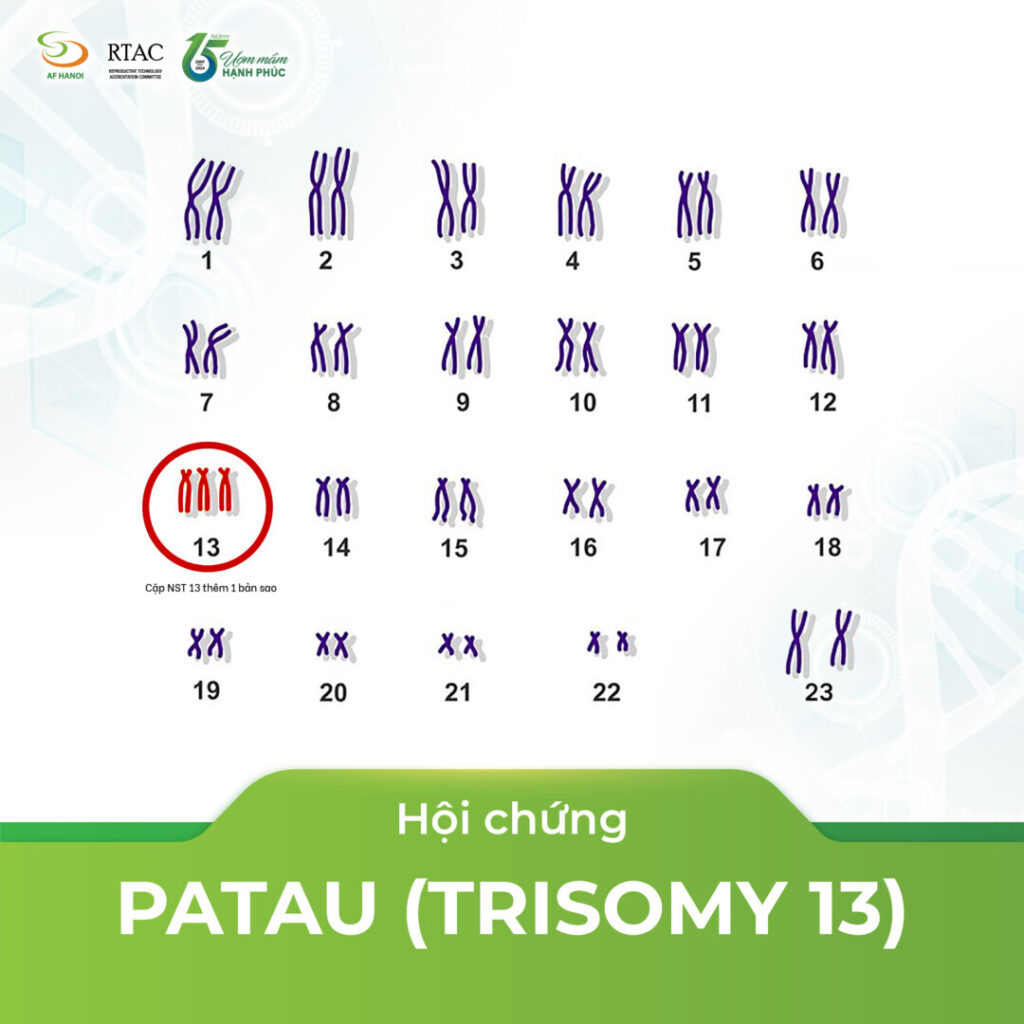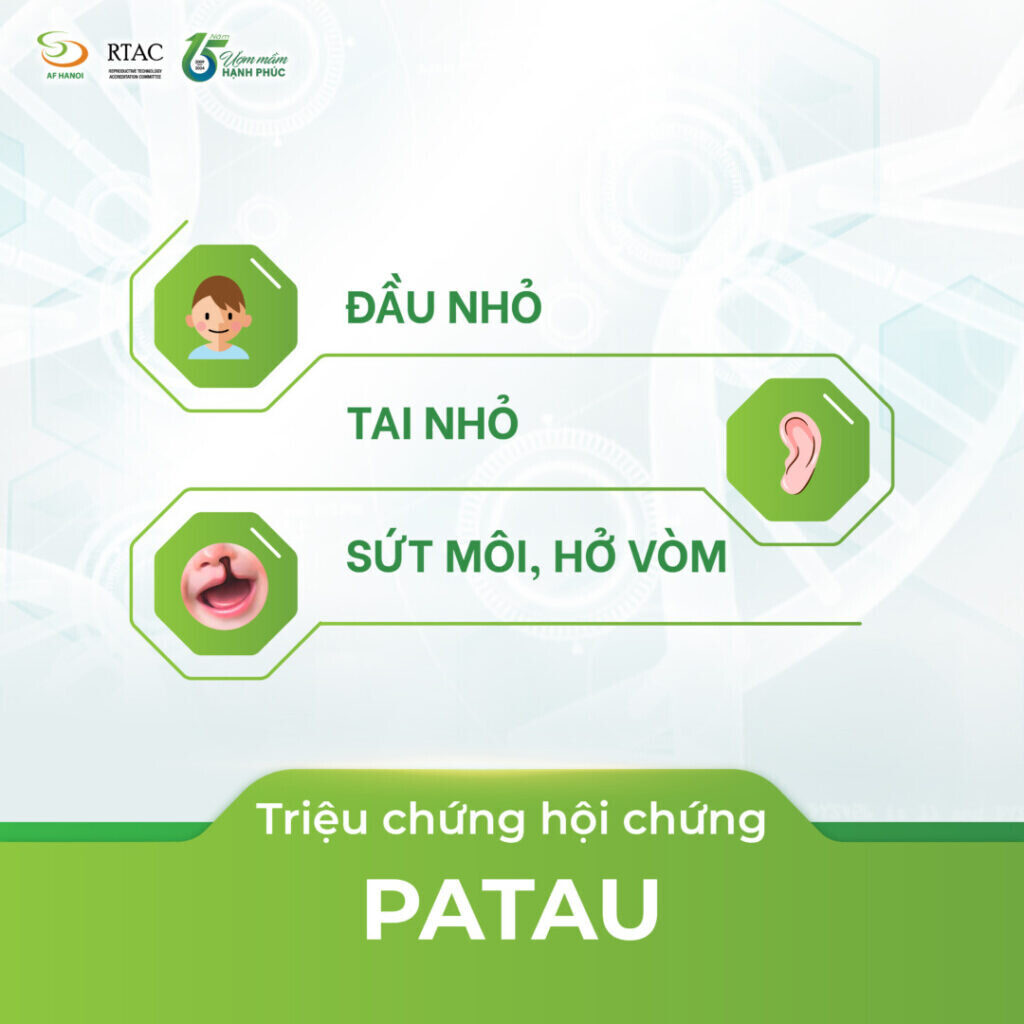08/11/2024

Patau Syndrome is a rare congenital genetic disorder that severely affects the health of the child and can even lead to death either in utero or shortly after birth.
Patau Syndrome (or Trisomy 13) is a serious congenital defect caused by a disorder of the 13th chromosome pair. Normally, individuals have 23 pairs of chromosomes, but in children with Patau syndrome, there is an extra copy of chromosome 13 (three copies of chromosome 13).
Patau Syndrome is quite rare, with an incidence rate of approximately 1 in 16,000-18,000 pregnancies. 95% of affected pregnancies will result in miscarriage, and the child very rarely survives beyond the first year of life.
Patau Syndrome is characterized by multiple severe congenital defects.
Common symptoms include:
In addition, other abnormalities such as intrauterine growth restriction, eye, nose, mouth, lower jaw defects (absence of philtrum, narrow palate, small jaw), polycystic kidneys, horseshoe kidney, hydronephrosis, etc.
Prenatal screening, including ultrasound, double test screening, or non-invasive prenatal testing (NIPT), is the most effective method for early detection of signs of Patau Syndrome. From there, appropriate prenatal diagnostic methods can be applied to help reduce the incidence of children born with the disease.

